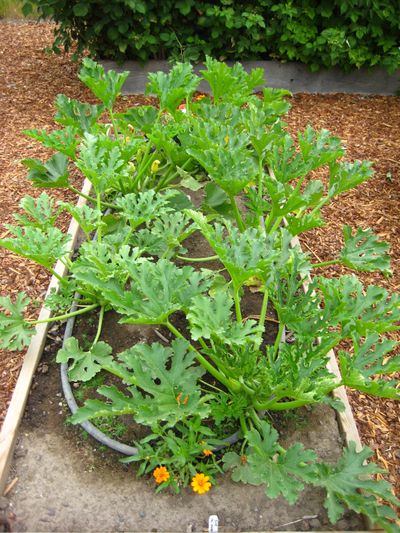Many crops put a premium on sun, heat

Sun and heat: that’s what warm-season crops love. While the Inland Northwest gets plenty of sunshine, our relatively short season can make growing these veggies a challenge.
The secret is in choosing varieties that need no more than 85 days to mature. Let’s look at these crops in the order of when they should be planted.
Beans and corn should be planted in mid-May. I start mine indoors on May 1 to give them a head start.
Bean seeds are available in bush or pole form. They should be planted 1 inch deep and with the little scar – I call it the “bellybutton” – facing downward for the best germination.
In the garden, bush beans should be spaced about 6 inches apart with a foot between rows. Provider, Maxibell and Top Crop are productive bush varieties.
Pole beans require some form of support to climb up because they will grow 6 to 8 feet tall. Plant them 2 inches apart. Good pole varieties include Kentucky Wonder, Roma and Helda. Harvest beans frequently to keep them coming.
Corn requires more room, with most seed packets recommending 18 inches between plants and rows spaced 3 feet apart. However, I squeeze them into my raised beds with just 1 foot of spacing in all directions.
Because corn plants are heavy feeders, be sure to provide them with plenty of nutrients in the form of organic soil amendments early in the season and fish emulsion, seaweed extract or other organic fertilizers as they’re growing.
Reliable varieties include Silver Queen and Peaches & Cream. To prevent corn earworms as the ears develop, place drops of mineral oil where the silks stick out of the ears.
In mid-May, I start cucumbers, melons and summer and winter squash indoors and transplant them outdoors around June 1. All of these seeds should be planted with the pointed end down.
Each of these crops needs extra heat, which can be provided by covering the soil surface with plastic mulch. Red or green plastic mulch will give the highest yields.
Cucumbers are available in climbing varieties – which will require vertical support – and compact bush varieties. Space the plants about 1 foot apart.
Melons are challenging to grow because they need a long time to mature, but the end result is always worth the wait. In the past, I’ve been happy with the short-season Alaska hybrid but am trying several heirloom varieties this year: Golden Jenny, Prescott Fond Blanc, Charentais and Early Silver Line.
Space the plants about 1 foot apart. In August, I start pinching back the vines so they concentrate their energy on ripening the fruits. The melons are ripe when their stems start pulling away from the vines.
Summer squash include zucchini, crookneck and pattypan varieties. They grow in bush form and should be spaced about 2 feet apart. A thick layer of untreated grass clippings placed around the plants will impede weed growth and keep moisture in the soil.
Most winter squash also need a long time to mature. You can have great results by starting them indoors two to three weeks ahead, using red plastic mulch and even giving them a little extra warmth with a floating row cover until they start blooming.
I’m growing Bush Buttercup, Table Queen Bush and Rouge Vif d’Etampes, all heirloom varieties.
Peppers and eggplants, both easy to grow, also benefit from red plastic mulch and should be spaced 1 foot apart. Basil will languish in cool temperatures so plant it around June 1 for best results. Good varieties include Lettuce Leaf, Genovese and Siam Queen.
Since growing tomatoes deserves its very own column, I’ll tackle that topic next week.